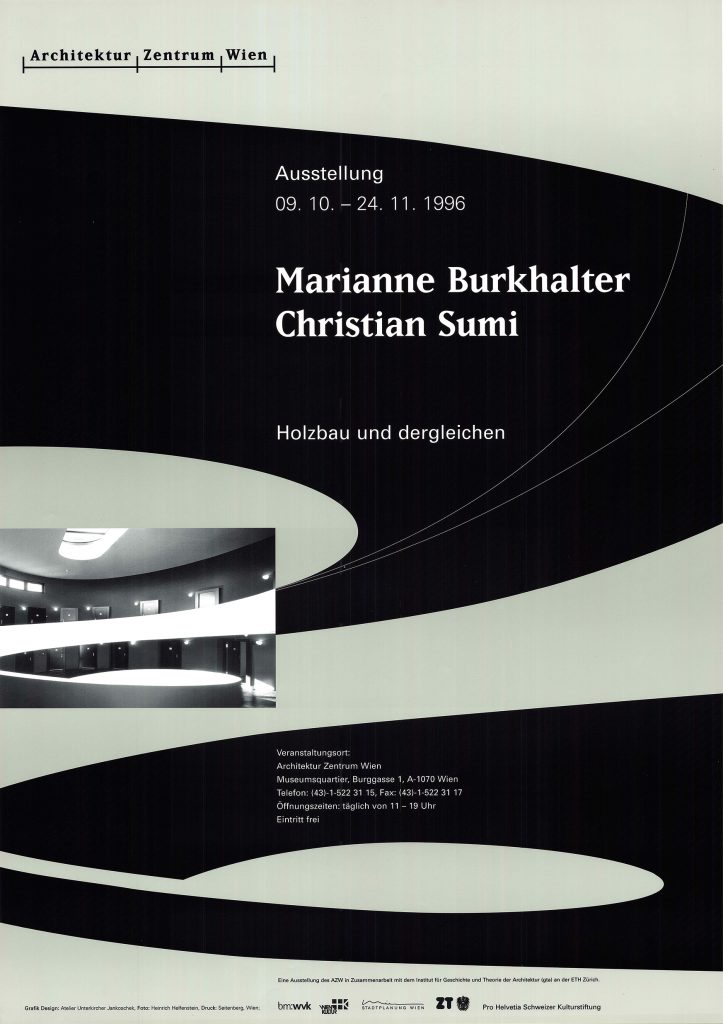Exhibition
Marianne Burkhalter & Christian Sumi
Timber Architecture and the Like

Exhibition poster: Marianne Burkhalter & Christian Sumi
© Architekturzentrum Wien, photograph: Heinrich Helfenstein, graphik: Atelier Unterkircher Jankoschek
In recent years, the Swiss architects Marianne Burkhalter & Christian Sumi have become known primarily for innovative timber-frame architecture, as well as having gained international recognition for their oeuvre. Burkhalter & Sumi’s buildings combine technical and formal aspects to achieve programmatic status and are characterized by the confrontation with modern, industrial methods of timber-frame construction. In the current debate on the “New Simplicity,” Burkhalter & Sumi’s work displays a profound spirituality and structural brilliance, in defiance of more simplistic concepts.
The Architekturzentrum Wien will present a survey of Burkhalter & Sumi’s work previously shown at the Institute for Architectural History and Theory (gta) at ETH Zürich. A number of more recent projects and general information on “timber architecture and the like” have been added to enhance the awareness of the architectural work that precedes construction. Burkhalter & Sumi ‘ s projects are informed by on-going research into the methods and technology of prefabrication, as well as the tectonic possibilities of standardized building.
It is thus that Burkhalter & Sumi have studied and analyzed the development of new timber construction technology and typology in the work of Frank Lloyd Wright, Carlo Mollino and Arne Jacobsen. One particular study is dedicated to the work of Konrad Wachsmann (1901-1980), who is considered the true pioneer of industrial building. After emigrating to the United States, he (together with Walter Gropius) developed the GENERAL PANEL SYSTEM that was to become known as the “post-war dream house.” Using pre-fabricated modular building units, five workers were able to assemble a house on site in under nine hours.
In investigating new constructive methods and principles, Wachsmann increasingly focused on the question of joinery and ultimately developed a universal standard joint. It was this technique of invisible joinery that allowed prefabrication to become integrated in every aspect of building. The joint was to emerge as the central architectonic theme within this modular approach. Wachsmann’s GENERAL PANEL SYSTEM has since become the standard for wood working and prefabrication.
Marianne Burkhalter & Christian Sumi have often referred back to the influence of Wachsmann on their work. The two architects continually experiment with the modular system and its infinite inherent possibilities. In an essay on the buildings of Marianne Burkhalter & Christian Sumi, Martin Steinmann writes: “A house is a unit made of parts, which in turn are units made of parts – i.e., it is a whole that has been assembled and that never conceals the fact that it has been assembled.”
